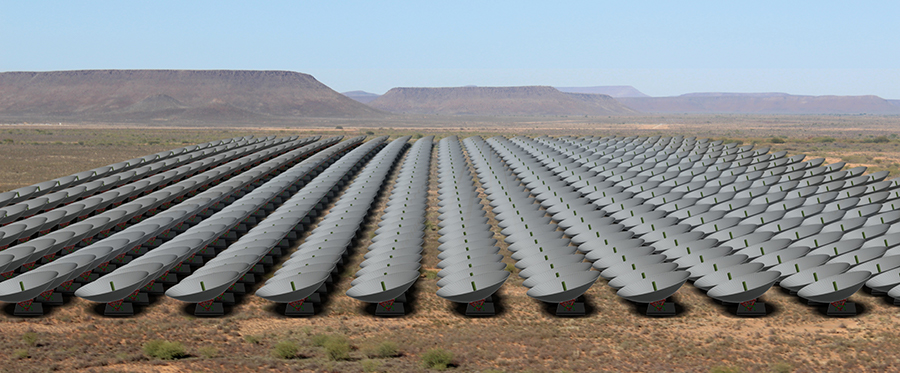New equipment to bolster SA’s ability to perform cutting-edge astronomy research


Rendering of possible HIRAX array to be installed at the South Africa Radio Astronomy Observatory site in the Karoo. Image: Prof Cynthia Chiang
The Department of Science and Innovation (DSI) and National Research Foundation (NRF) approved the funding of R35 million for the Hydrogen Intensity and Real-time Analysis eXperiment (HIRAX), which will be built as a guest instrument on the South African Radio Astronomy Observatory’s (SARAO) site in the Karoo. This follows an intensive and rigorous review process involving international experts.
The new equipment will bolster the country’s ability to perform cutting-edge astronomy research in alignment with the Grand Challenge Astronomy National Strategy. This new investment by the Department of Science and Innovation, in partnership with the NRF, will provide funding for the telescope dishes, feeds, radio frequency over fibre system, and some backend hardware. This contribution represents a significant investment in the overall HIRAX project.
This state-of-the-art telescope will provide large astronomy data sets to the project's consortium members, international partners, and project collaborators. Professor Amanda Weltman, of the University of Cape Town (UCT) Department of Mathematics, who is part of the project shared: “This is a major milestone for HIRAX, a locally led experiment that holds the potential to solve some of the most challenging and interesting problems in cosmology and astrophysics today.”
South Africa has a long history of successful astronomy telescopes, and the future Square Kilometre Array (SKA), which will be hosted by both South Africa and Australia, is set to be the largest radio telescope in the world. HIRAX will provide training and skills development in anticipation of the SKA era while studying cutting-edge questions in the fields of dark energy, fast radio bursts, and pulsar science. The telescope is currently funded to be an interferometer array of 256 closely packed dishes that will provide an unprecedented peek into the history of our universe. There are also plans for possible future expansion to 1 024 dishes.
Reflecting on the NRF’s University Flagship Programme which aims to provide customised, innovative solutions and institutional support in a way that recognises the unique strengths and niche research areas of public universities, Dr Gansen Pillay, the acting CEO said: “This investment in Strategic Research Equipment will further advance postgraduate student training, new knowledge generation and South Africa’s standing as a global leader in the field of astronomy.”
There are five international consortium partners: McGill University, ETH Zürich, Université de Genève, École Polytechnique Fédérale de Lausanne, and West Virginia University. There are also 12 additional collaboration members: Botswana International University of Technology, Laboratoire Astroparticule & Cosmologie, University of British Columbia, Canadian Institute for Theoretical Astrophysics, University of Oxford, University of Toronto, the Inter-University Centre for Astronomy and Astrophysics, University of Wisconsin-Madison, Perimeter Institute, Carnegie Mellon University, Stellenbosch University, Jet Propulsion Laboratory, and Yale University.
(NRF press release.)
